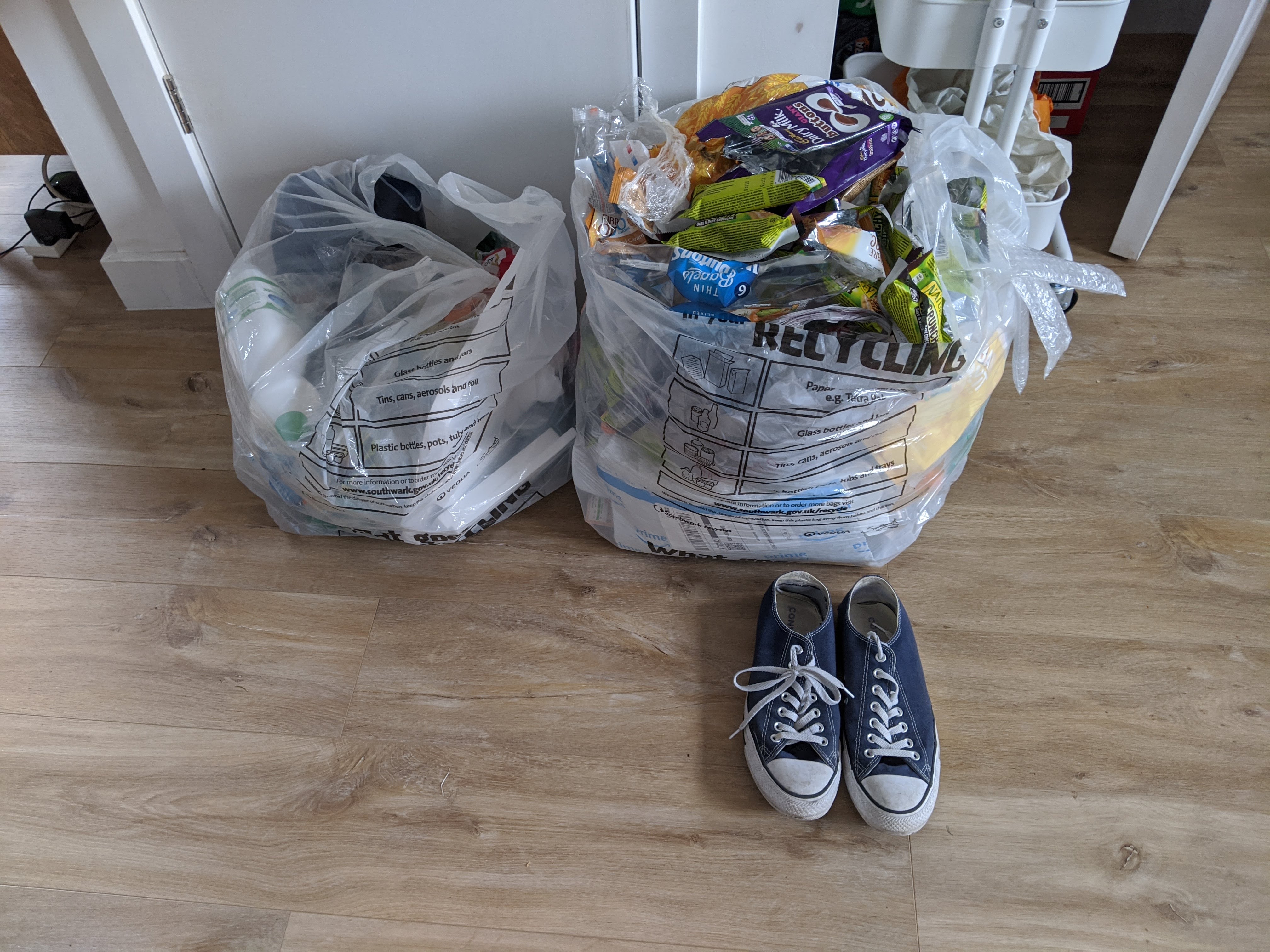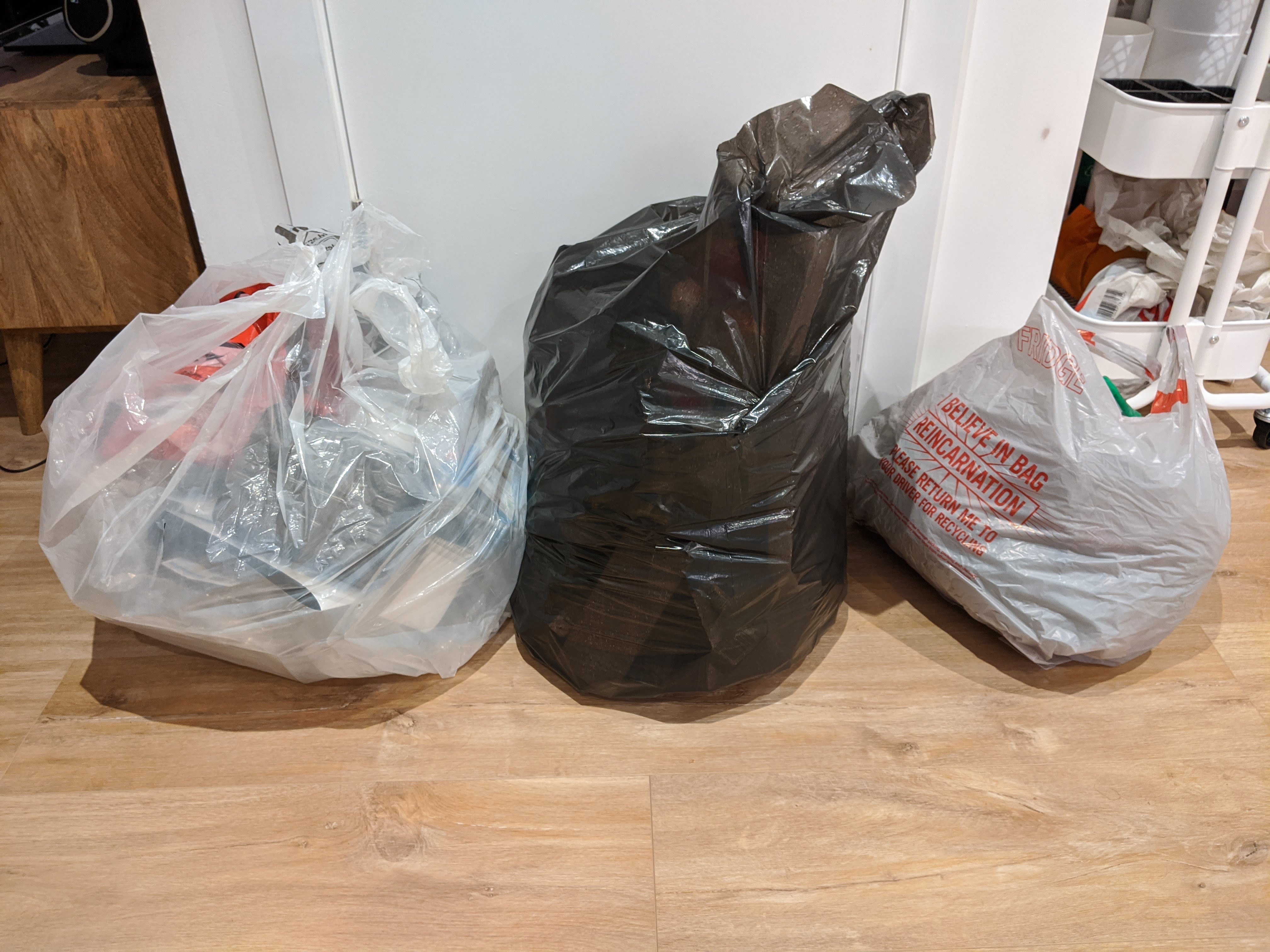Recently at work, someone posted about their plans to go plastic-free for July, encouraging others to do the same. This is something I’ve been interested in trying for a while, after seeing a few friends do it, however with the realities of lockdown I decided it probably wasn’t going to be practical right now (e.g. assuming food would be a major contributor and with me getting all my groceries delivered, removing a lot of control and making it hard to check packaging ahead of time (and impossible not to get plastic bags)).
It didn’t mean I couldn’t try to do something positive though, and it occurred to me that when I eventually can try going plastic-free for a month, it will all the more interesting if I have something to compare it to, and so I decided to simply keep track of every piece of plastic I used in July. It could form a useful baseline for the future, might be kind of interesting, and also perhaps help me improve my current recycling habits a bit (as I’m still not sure entirely what can go where).
The Results
One month of my plastic usage looks like this (shoes for scale):

A total of ~1,484g
Which breaks down into (from left-to-right):

- 800g that I can recycle at home (54%)
- 468g can’t be recycled and goes in the rubbish (32%)
- 216g that could be recycled at specialist facilities (14%)
I’m honestly not sure if that’s more or less than I expected.
Searching online it’s a little tricky to get a reliable figure for “Average plastic usage per month by person” for comparison (at least without paying for it).
One unsupported figure mentioned a few places is that an average family will throw away (not recycle) ~40kg of plastic per year, and a better supported figure (source) states that the average household plastic recycling rate in England is ~43%. So that could suggest an average of 70.18kg plastic waste per household per year, or 5.85 kg per month. Assuming 4 people per family, that could suggest 1.46kg per person. Which is surprisingly in line with my total, and good enough to satisfy my curiosity. (Though probably also nonsense, deserving of some pretty wide error bars; as usage is unlikely to average down to a single person in such a way, and that 40kg figure is unsubstantiated, and never trust statistics from the internet, etc.)
Anyway the point wasn’t to compare myself to others, just to find my baseline, which I’ve done.
The Surprises
I also learnt some interesting/surprising things along the way:
-
Firstly I was surprised by how much space so little weight took up. I’m used to hearing about plastic in tonnes, and I thought I had some idea in my head of how much that would be, but based on my experience, one tonne of household waste density plastic would probably fill the whole downstairs of my flat. And that’s a much more compelling/concerning way to picture it.
 This symbol. I always assumed it meant you can recycle the thing that has it printed on it. It certainly looks like it, but apparently not:
This symbol. I always assumed it meant you can recycle the thing that has it printed on it. It certainly looks like it, but apparently not:
The Green Dot does not necessarily mean that the packaging is recyclable, will be recycled or has been recycled. It is a symbol used on packaging in some European countries and signifies that the producer has made a financial contribution towards the recovery and recycling of packaging in Europe source
-
Information is still not presented as easily as it should be. One of the best sites out there is https://www.recyclenow.com/local-recycling. It’s a good site. You can put in your post code and the type of bin, and it will tell you what you can include, kind of. For example, under plastic, it tells me I can recycle “Food pots and tubs”, “Margarine tubs”, “Plastic trays”, “Yoghurt pots”. Which seems very user friendly, but it’s open to interpretation. I found that some tubs were accepted, whereas actually some weren’t, and it took a fair bit of digging to be sure. Whereas if they just also included the recycling code (the number in the little arrow triangle stamped into plastic), then I could know for sure, with no doubt. “Yep, number 1, in it goes…”
-
Not entirely a surprise, but I definitely experienced a observer affect. Just from taking the time to keep an eye on how must plastic I was using, and, in particular, from storing it separately and letting it accumulate and seeing it grow, I found myself being a lot more careful and conscious, and that’s stuck with me already.
- Finally, and perhaps most importantly, apparently I eat at absolute shedload of Nature Valley bars. I wonder if I can buy some shares in them…
